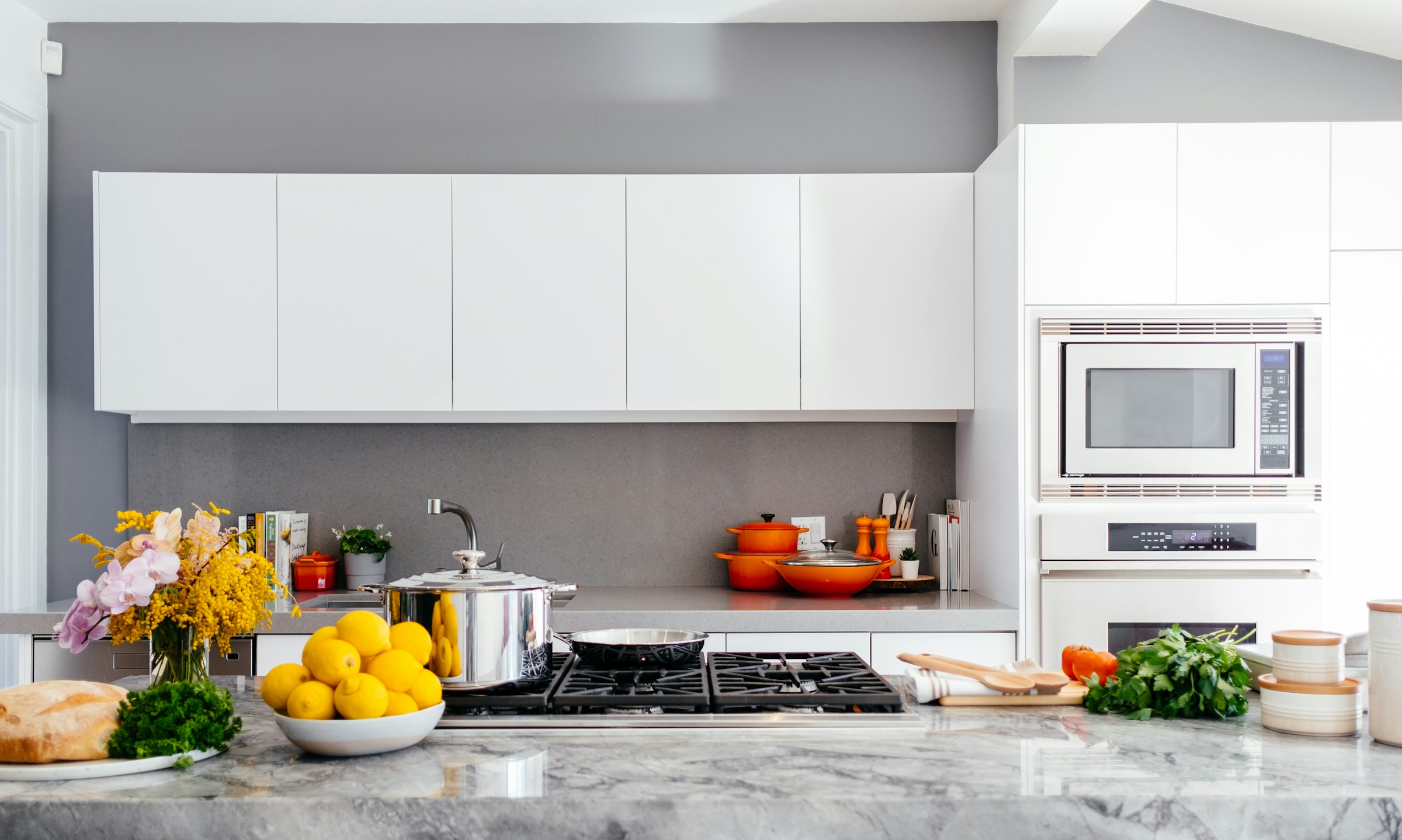Terraced houses and small apartments are common in the UK, and they often come with galley kitchens. These types of kitchens are traditionally long and narrow, with cabinets and appliances aligned along two parallel walls. Despite their small size, they are renowned for their efficiency and ease of use. However, if you’re not mindful of your design and layout choices, a galley kitchen can quickly feel cramped and cluttered. But how can you prevent this? Well, let’s delve into the world of galley kitchen enhancement and explore some ideas that will make your space more functional.
Maximising Space in a Galley Kitchen
Space, or rather the lack of it, is typically the biggest challenge when dealing with galley kitchens. However, with some careful planning and creative ideas, you can maximise the space and make your kitchen feel larger than it is.
Topic to read : Which type of flooring is best for UK kitchens with underfloor heating?
Firstly, consider how you utilise your wall space. Tall wall cabinets are a staple in galley kitchens, effectively increasing your storage options. Opting for glass-fronted wall cabinets can make the space feel more open and allow you to showcase your best dishes and glassware.
Secondly, installing pull-out storage solutions will help you keep everything within reach without overstuffing your cabinets. These may include pull-out larders, spice racks, or even corner carousels.
Also read : Which type of flooring is best for UK kitchens with underfloor heating?
Lastly, remember to utilise the space above your cabinets. Baskets or decorative boxes can be placed on top of the cabinets for storing lesser-used items. By optimising every inch of your galley kitchen, you can create a more functional and organised space.
Lighting Ideas for Galley Kitchens
Lighting plays a vital role in creating the illusion of a larger space. The right lighting in a galley kitchen can make the walls recede and the ceiling seem higher, giving the room a more spacious feel.
Under-cabinet lighting is a popular choice in galley kitchens, illuminating the countertops and making meal prep easier. Pendant lights can be hung above the sink or dining area, adding a sense of height and depth to the room.
Don’t forget about natural light. If your kitchen has a window, make sure it’s not blocked by heavy curtains or blinds. Instead, opt for sheer window treatments or consider installing a skylight if possible.
Integrating Dining Space in a Galley Kitchen
In small kitchens, integrating a dining space can be a challenge. But with some clever design ideas, you can still enjoy your meals in the heart of your home.
One popular solution is to install a breakfast bar or a narrow island parallel to one side of the galley. This can serve as a preparation area when cooking and double as a dining table when needed.
Alternatively, if your kitchen opens up to a living or dining room, consider creating an open layout. This will not only make the kitchen feel larger, but also facilitate interaction between the two rooms.
Choosing Appliances for a Galley Kitchen
When it comes to galley kitchens, choosing the right appliances is crucial to maintain the functionality and flow of the space.
Opt for compact, built-in appliances that can be integrated into your cabinets. This will not only save you space but also give your kitchen a seamless look.
Also, consider appliances that serve multiple functions. For instance, a combination oven can function as a microwave, grill and convection oven, saving you the need for three separate appliances.
Defining Your Galley Kitchen Style
Lastly, defining your kitchen’s style can bring a sense of cohesion to your small space. Whether you’re a fan of modern minimalism or rustic charm, maintaining a consistent design theme will make your kitchen feel more harmonious and visually appealing.
If you’re going for a modern look, sleek cabinets with minimal hardware and high-gloss finishes will give your kitchen a clean, streamlined appearance. For a more traditional feel, consider Shaker-style cabinets in warm tones, paired with classic fixtures and fittings.
Regardless of the style you choose, remember that the key to a successful galley kitchen design lies in maximising functionality without compromising on aesthetics.
The Role of Colours and Materials in a Galley Kitchen
The colours and materials you choose for your galley kitchen can significantly impact its overall feel and functionality. Light colours, for example, are known to make a space feel larger and airier. Thus, opting for light-coloured cabinets, walls, and countertops can help create the illusion of a more spacious kitchen.
Materials also play a crucial role. Stainless steel appliances, for example, have a sleek, modern look and are easy to clean, making them a popular choice for galley kitchens. Similarly, choosing durable countertops made from materials like granite or quartz means they’ll withstand heavy use and continue to look great over time.
Flooring should not be neglected in your kitchen design. Hard-wearing materials like tile or engineered wood can withstand the rigours of a busy kitchen and are available in a variety of styles to suit your chosen aesthetic.
For a touch of warmth, consider adding wood accents through open shelving or a butcher block countertop. Wood brings a natural element into the space and can balance the cool tones often found in kitchen appliances and surfaces.
Remember, the key point here is to create a harmonious balance between your colour palette and material choices to enhance both the functionality and aesthetics of your small galley kitchen.
The Power of a Well-Planned Layout in a Galley Kitchen
A well-thought-out layout is the backbone of a functional galley kitchen. It dictates the placement of appliances, storage, and workspaces, all of which contribute to the kitchen’s overall flow and efficiency.
The most common layout in galley kitchens is the two-wall layout, where appliances and storage are placed on two parallel walls. This layout maximises efficiency by creating a clear path between key areas, such as the stove, sink, and refrigerator, often referred to as the kitchen triangle.
Another layout option is the one-wall layout, where all kitchen components are placed along a single wall. This layout can make a small galley feel more open but may require careful planning to ensure ample workspace and storage.
If your kitchen space permits, you might also consider an L-shaped layout. This layout can create more counter space and is ideal for those who prefer a more open plan.
Lastly, always remember to allow for adequate aisle space in your layout. A minimum of 42 inches is recommended for single-cook kitchens, while 48 inches is suggested for multiple-cook kitchens to ensure easy movement and workflow.
Conclusion
Transforming your galley kitchen into a functional and stylish space requires a blend of smart storage solutions, well-planned layout, thoughtful use of colour and materials, and the right lighting.
Remember, every inch of space in a galley kitchen is valuable. Therefore, utilise it wisely – from the wall cabinets to the space above them. Choose appliances and fixtures that complement your kitchen’s size and design.
Despite the spatial constraints, with a bit of creativity and planning, even the smallest of galley kitchens can be turned into a practical and inviting space. Whether you’re renovating an existing kitchen or starting from scratch, these tips and ideas will help you maximise the potential of your galley kitchen.
Ultimately, a well-designed galley kitchen isn’t just about aesthetics. It’s about creating a space where you can cook, dine, and socialize with ease and comfort. So, take your time, plan carefully, and before you know it, you’ll have a galley kitchen that not only looks great but works perfectly for your needs.






